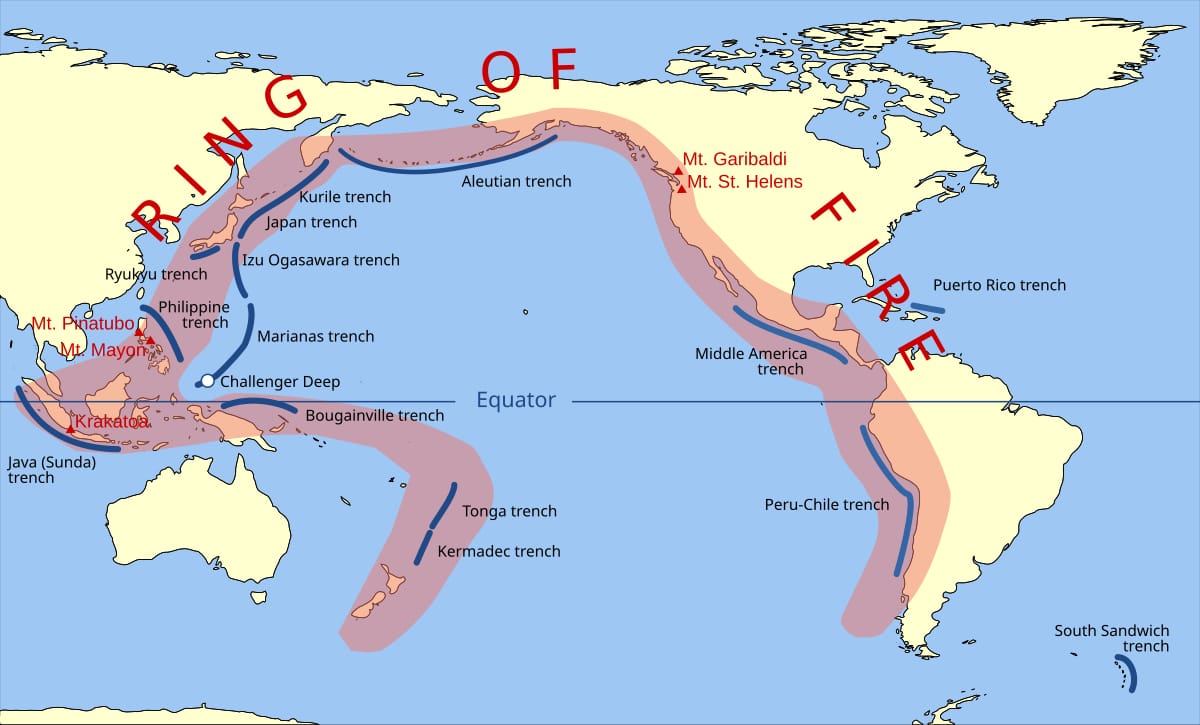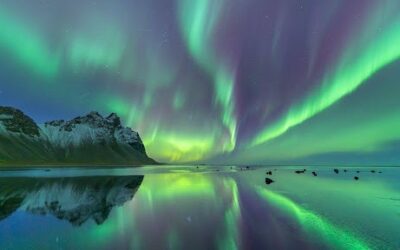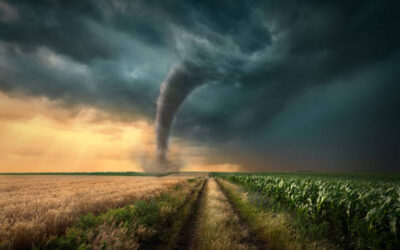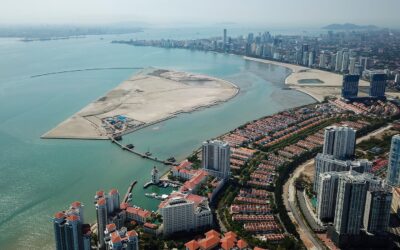Where Earth Breathes Fire
Picture yourself standing at the rim of a steaming volcano at sunrise. The air is crisp, but tinged with the scent of sulfur. Beneath your feet, the ground is warm, almost as if the Earth itself is alive and breathing. In the distance, the Pacific Ocean stretches endlessly, its surface calm, yet hiding unimaginable power below. This is the Circum-Pacific Zone, better known as the “Ring of Fire”—a place where the planet’s raw energy is on constant display, shaping not just the land, but the destinies of millions who call its edges home.
The Ring of Fire is not just a geographical feature; it’s a living, ever-changing boundary where the Earth’s tectonic plates meet and interact. It’s a place of awe-inspiring beauty and terrifying natural forces—a region that has inspired myths, shaped cultures, and continues to challenge scientists and ordinary people alike.
What Is the Circum-Pacific Zone?
The Circum-Pacific Zone, or the Ring of Fire, is a vast, horseshoe-shaped belt encircling the Pacific Ocean. Stretching for over 40,000 kilometers, it touches the western coasts of North and South America, sweeps across the islands of East and Southeast Asia, and dips down to Australia and New Zealand. But this isn’t just a line on a map—it’s a living boundary, a zone of constant geological activity where the Earth’s crust is restless and dynamic.
The Shape and Scope
If you could see the Ring of Fire from space, it would look like a fiery necklace, studded with more than 450 volcanoes—about 75% of all active and dormant volcanoes on Earth.
But the Ring is more than just volcanoes. It’s also the site of frequent earthquakes, deep ocean trenches, and towering mountain ranges. It’s a place where the planet’s inner workings are closest to the surface—a window into the powerful forces that shape our world.
The Pulse of the Planet: Tectonic Plates in Motion
To truly understand the Ring of Fire, we need to journey beneath our feet, into the hidden world of tectonic plates. The Earth’s outer shell, the lithosphere, is broken into massive slabs called tectonic plates. These plates are constantly moving, though usually at a rate slower than your fingernails grow. Over millions of years, their movement has shaped continents, built mountains, and carved out oceans.
The Pacific Plate and Its Neighbors
At the heart of the Ring of Fire is the Pacific Plate—the largest of all the Earth’s plates. Surrounding it are a cast of other major plates: the North American, South American, Eurasian, Philippine, Indo-Australian, and Antarctic plates. Where these plates meet, the Earth’s crust is anything but calm.
Subduction: The Engine of the Ring
One of the most dramatic processes in the Ring of Fire is subduction. Imagine two massive conveyor belts—one sliding beneath the other. In the Ring of Fire, the dense, heavy oceanic crust of the Pacific Plate is forced under lighter continental plates. As it sinks, it melts and forms magma. This magma, under immense pressure, seeks a way out—often erupting through volcanoes that dot the Ring.
Other Plate Interactions
But subduction isn’t the only story. In some places, plates slide past each other, like along California’s famous San Andreas Fault. In others, they pull apart, letting new magma rise and create fresh crust. Each of these movements brings its own drama and danger, constantly reshaping the landscape.
Volcanoes: Earth’s Fiery Sculptors
If you were to fly over the Ring of Fire, you’d see a dazzling chain of volcanoes—some serene and snow-capped, others belching smoke and ash. About three-quarters of the world’s volcanoes, both active and dormant, are found here. Each one is a chapter in the ongoing story of creation and destruction.
Famous Volcanoes and Their Stories
- Mount St. Helens (USA): In 1980, it erupted with such force that it flattened forests and sent ash across the continent—a stark reminder of nature’s unpredictable power.
- Mount Fuji (Japan): A symbol of beauty and resilience, Fuji is also a silent sentinel, reminding everyone in Japan of the ever-present risk of eruption.
- Krakatau (Indonesia): Its 1883 eruption was so violent that it destroyed most of the island, triggered massive tsunamis, and even affected global weather for years.
- Mount Pinatubo (Philippines): Its 1991 eruption was one of the largest of the 20th century, cooling global temperatures and displacing thousands.
The Science Behind the Spectacle
Volcanoes in the Ring of Fire tend to be explosive. Why? Because the subducting plates drag water-rich sediments deep into the Earth, mixing with magma and increasing pressure. When this pressure is released, the results can be both breathtaking and deadly.
The Role of Volcanoes in Human History
Throughout history, volcanoes have inspired awe and fear. Ancient peoples saw them as homes of the gods or entrances to the underworld. Today, they are still central to the lives of millions—providing fertile soil for farming, but also posing constant risks.
Earthquakes: The Ground Shakes, Lives Change
If volcanoes are the Ring’s most visible features, earthquakes are its most unpredictable. Around 90% of the world’s earthquakes strike along this volatile belt. Some are gentle tremors; others are catastrophic, toppling cities and triggering tsunamis.
Unforgettable Quakes
- 2011 Tohoku Earthquake (Japan): A magnitude 9.0 quake unleashed a devastating tsunami and led to the Fukushima nuclear disaster—a sobering reminder of nature’s power.
- 1960 Valdivia Earthquake (Chile): The strongest earthquake ever recorded, it reshaped the land and sent waves racing across the Pacific.
- 1906 San Francisco Earthquake (USA): This disaster destroyed much of the city and changed the course of American urban development.
Why So Many Quakes?
The answer lies in the constant movement of tectonic plates. Stress builds up along faults, and when it finally breaks, the ground shakes—sometimes with devastating consequences.
Tsunamis: The Ocean’s Fury
Earthquakes under the sea can trigger tsunamis—giant waves that race across the ocean at jetliner speeds. The 2004 Indian Ocean tsunami, though outside the Ring of Fire, was a stark reminder of the risks faced by coastal communities.
Oceanic Trenches: Earth’s Deepest Mysteries
Beneath the ocean, the Ring of Fire is marked by some of the planet’s deepest trenches—places where one plate dives beneath another. These underwater canyons are among the least explored places on Earth, home to strange and wonderful life forms.
- The Mariana Trench: Near Guam, it plunges almost 11,000 meters below sea level—deeper than Mount Everest is tall. Here, in the darkness and crushing pressure, life persists against all odds.
- Other Notable Trenches: The Peru-Chile Trench, Japan Trench, and Tonga Trench are also sites of frequent earthquakes and tsunamis.
Life in the Depths
Despite the extreme conditions, these trenches are home to unique ecosystems—giant tube worms, bizarre fish, and microbes that thrive in complete darkness. Studying these life forms helps scientists understand the limits of life on Earth—and even the possibility of life elsewhere in the universe.
Mountains Born of Fire and Pressure
The relentless collision and subduction of plates don’t just create volcanoes—they also build mountains. The Andes, stretching along South America’s west coast, are the world’s longest continental mountain range, born from the clash between the Nazca and South American plates. In North America, the Cascades and Rockies have similar origins.
The Human Story of Mountains
For countless generations, people have made their homes in these mountains—herding llamas in the Andes, skiing in the Rockies, or farming on the slopes of Mount Fuji. The mountains are not just geological features; they are cultural landscapes, shaping the lives and identities of those who live among them.
Islands and Archipelagos: Land Rising from the Sea
Many Pacific islands are the peaks of underwater volcanoes. Over time, eruptions build land that eventually breaks the ocean’s surface. Japan, the Philippines, Indonesia, and countless smaller islands owe their existence to this fiery process.
The Birth of New Land
Sometimes, new islands are born right before our eyes. In 2013, a volcanic eruption off the coast of Japan created a new island, Nishinoshima, which continues to grow today. These events are reminders that the Earth is still creating new land, even in the modern age.
Island Cultures
The peoples of the Pacific islands have developed rich cultures, deeply connected to the land and sea. Their stories, songs, and traditions often reflect the dramatic forces that shape their world.
Hotspots: The Odd Ones Out
Not all volcanoes in the Pacific are tied to subduction. Some, like Hawaii, are formed by hotspots—plumes of hot mantle material that punch through the crust, creating chains of volcanoes as the plate drifts overhead.
The Hawaiian Islands
The Hawaiian Islands are a perfect example. As the Pacific Plate moves northwest, a stationary hotspot creates a trail of volcanic islands. The Big Island of Hawaii is the youngest and most active, while older islands erode and sink back into the sea.
Scientific Mysteries
Hotspots are still not fully understood. Why do they form where they do? How deep do they go? Studying them helps scientists unravel the mysteries of the Earth’s interior.
Life on the Edge: Human and Ecological Impacts
For millions, the Ring of Fire is home. Cities like Tokyo, Santiago, San Francisco, and Jakarta sit atop some of the world’s most restless ground. Volcanic ash creates fertile soils, supporting lush forests and productive farms, but the risks are ever-present.
Living with Danger
People here have learned to adapt. In Japan, earthquake drills are routine, and buildings are engineered to sway, not collapse. Chile has early warning systems and strict building codes. In Indonesia, communities monitor volcanoes and have evacuation plans in place. But nature’s unpredictability means every generation faces new challenges.
Unique Ecosystems
The Ring of Fire isn’t just about destruction. Its varied landscapes support a dazzling array of life—from bizarre deep-sea creatures to lush cloud forests on volcanic slopes. Many species are found nowhere else, making the region a hotspot for biodiversity as well as geology.
Economic Importance
The Ring of Fire is also an economic powerhouse. Its volcanoes provide geothermal energy, its mountains are rich in minerals, and its fertile soils support agriculture. Fishing, tourism, and shipping are vital industries, but all are vulnerable to natural disasters.
The Ring of Fire in the Modern World
The Circum-Pacific Zone isn’t just a geological curiosity. It’s a region of immense economic, cultural, and scientific importance. It supplies minerals, geothermal energy, and fertile land. Its volcanoes and earthquakes are the focus of cutting-edge research, helping scientists predict and prepare for disasters.
Scientific Frontiers
From deep-sea submersibles exploring the Mariana Trench to satellites tracking seismic activity, the Ring of Fire is at the forefront of earth science. Each eruption and earthquake adds to our understanding of the planet.
Challenges Ahead
As cities grow and populations rise, the risks increase. Climate change may even influence volcanic and seismic activity, adding new layers of complexity. International cooperation, strong infrastructure, and public education are more important than ever.
Disaster Preparedness
The lessons learned from past disasters have led to improvements in building codes, early warning systems, and emergency response. But there is always more to do. The Ring of Fire is a reminder that we must respect the power of nature and be prepared for the unexpected.
The Ever-Changing Edge…
The Circum-Pacific Zone is a place of paradox—dangerous yet life-giving, destructive yet creative. It reminds us that we live on a restless planet, shaped by forces far older and more powerful than ourselves. By studying and respecting these forces, we can better prepare for the future and marvel at the awe-inspiring beauty of the world’s most dynamic region.
The Ring of Fire is not just a line on a map; it’s a living, breathing part of our planet—a place where the Earth’s inner workings are on full display. It challenges us to understand, to adapt, and to appreciate the incredible power and beauty of the natural world.
Imagine standing on the rim of a simmering volcano in Indonesia, feeling the earth tremble beneath your feet. Or picture the vast Pacific Ocean, its tranquil surface belying the restless energy that churns deep below. This is the Circum-Pacific Zone—a region where the planet’s inner forces are on full display, shaping landscapes, ecosystems, and even human destinies.





0 Comments